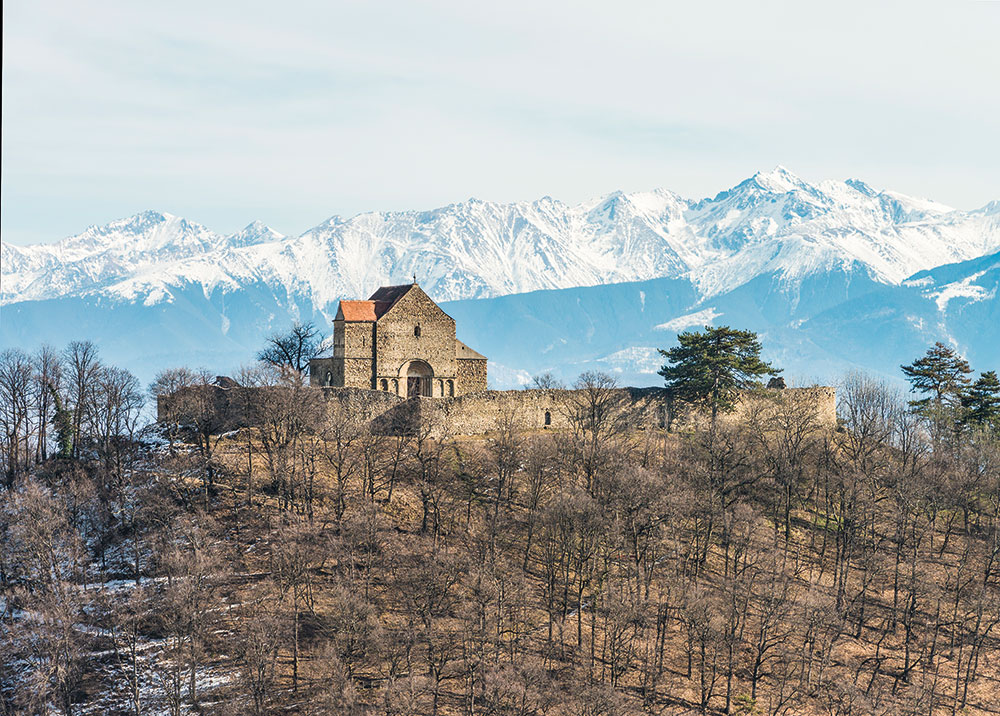“In the villages, the church has always been like a castle surrounded by a wall, with watch towers, strong gates, a moat with a drawbridge or if necessary a second inner wall. It was the refuge of the community at the approach of the enemy, the place they brought their possessions and grain so that when the land was devastated and the harvest destroyed, they at least had storage in order to avert the horrors of a famine.”
Charles Boner: Land und Leute in Siebenbürgen, Leipzig 1868
Ever since the Mongol invasion (1241–1242), the defense of the new settlements became of great importance. Initially the castles were built in higher altitudes, later the village churches were fortified with ditches, ramparts and palisades. These were replaced by heightened ring walls with defensive towers. After the first Ottoman invasions
in the early 15th century, the interior of the castles boasted crop storages and other storerooms that offered refuge to the villagers in times of siege. In most villages, except for in the Țara Bârsei, the churches themselves were fortified: Defense floors arose between the naves and roof trusses, the so-called defense arches, were first built as half-timbered constructions and later positioned on buttresses. In the Târnava district and the Hârtibaciu Valley the choir rooms received tower-like superstructures which, as well as the fortified west towers, boasted defense walls. The main portals were closed with masonry and the churches were instead accessed through the side portals.
With the beginning of more peaceful times at the beginning of the 18th century the fortifications lost their function. In the 19th century the defense systems were dismantled at some churches. A number of fortified churches lost their ring walls. The towers often remained as a sign of tradition and defense history. The demolished material was used for the construction of schools, parish or town houses.
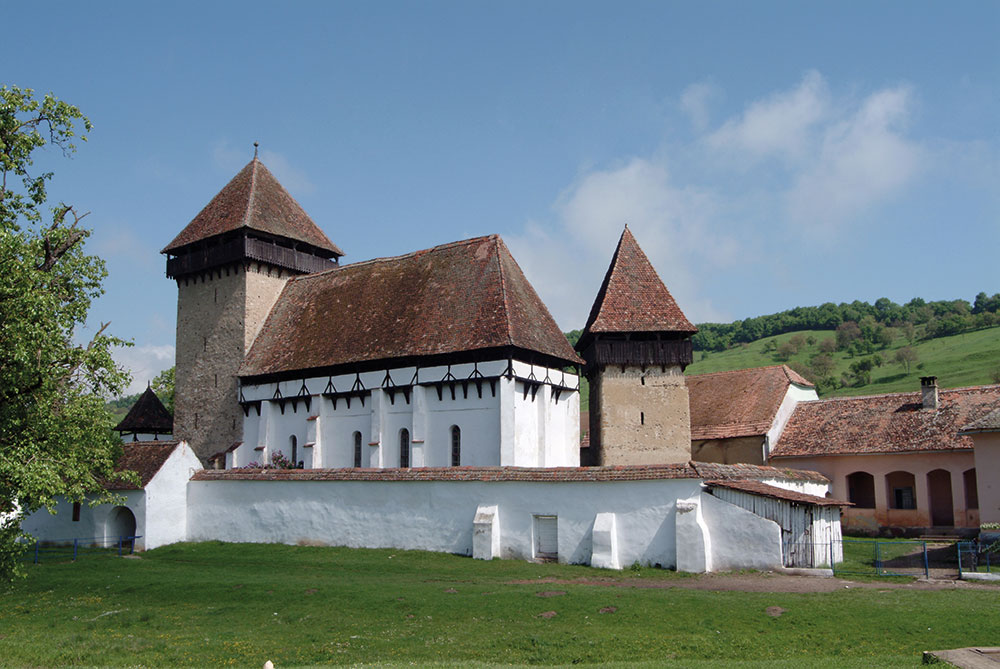
The early forms of construction of fortified churches include the church of Stejărișu with the timbered defensive level built above the nave. In front of the west façade a mighty fortification tower with covered defense level emerged. Photo: Arne Franke 
As the most powerful facility of its kind the fortified church of Prejmer, protected as a UNESCO World Heritage Site, was built starting in the 13th century. The unfortified church stands in the center of the heavily reinforced up to 14-meter high ring wall. Photo: Arne Franke 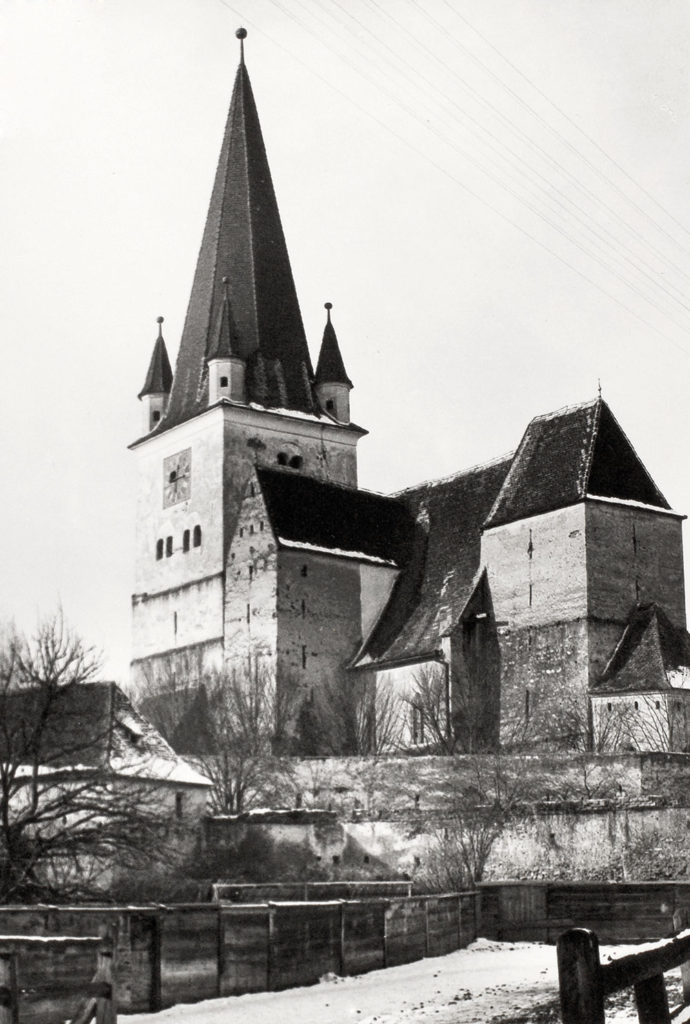
In Cisnădie, the Romanesque basilica, which received an oval Bering after 1241, was additionally fortified around 1430. The side entrances were expanded by anking towers and the choir by a four-storey defense tower. Photo around 1940. Photo: Siebenbürgen-Institut an der Universität Heidelberg, Gundelsheim am Neckar 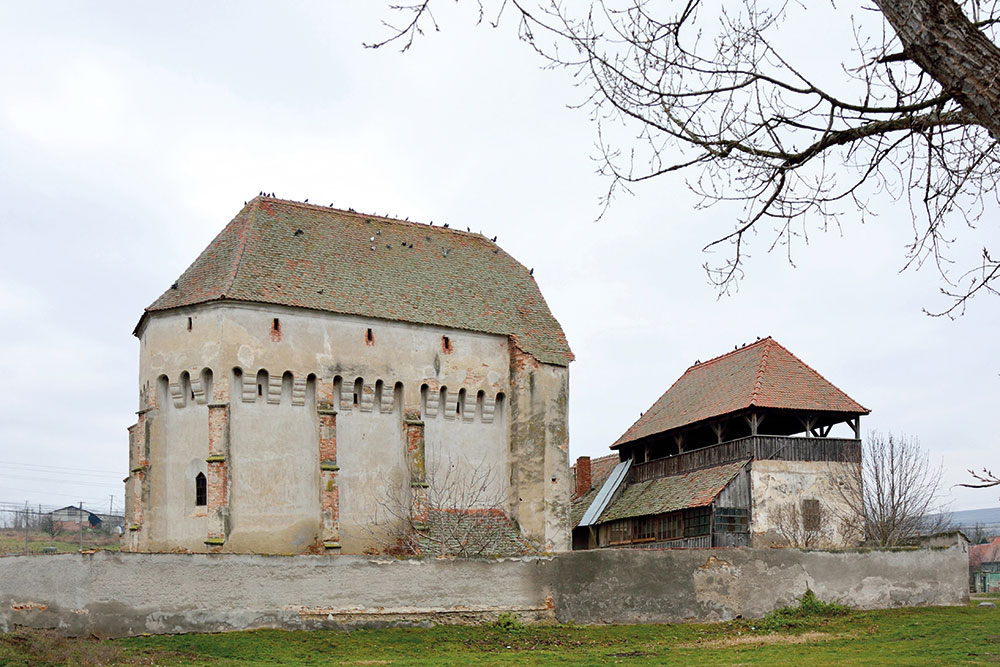
Built in 1523, the hall church of Boz was fortified from the beginning. Characteristic are the rhythmatizing with buttresses, scaled consoles and intermediate machicolation and the defense platforms with loopholes. Photo: Stefan Bichler 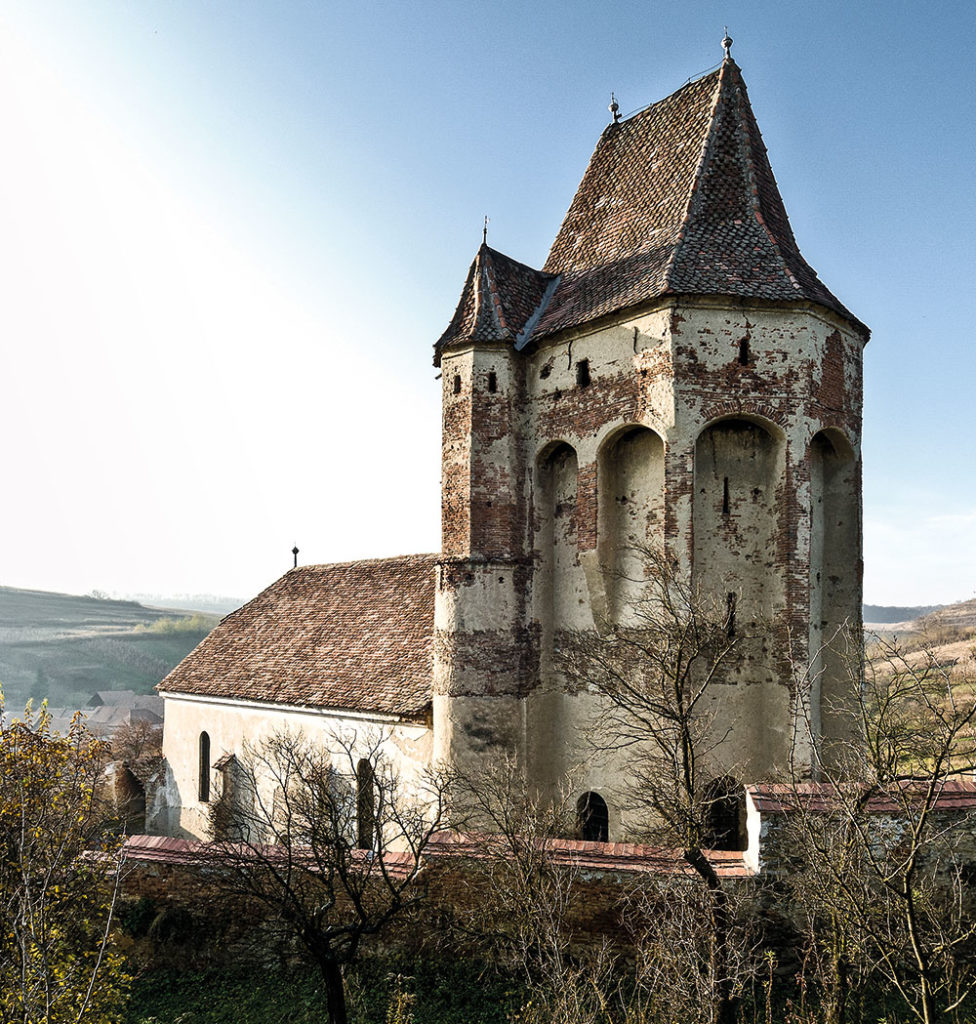
In order to protect the east side of the fortified church of Buzd against the ascending slope, the Gothic choir was overbuilt with an impressive tower. In addition, another, no longer existent western tower secured the fortification. Photo: Martin Eichler 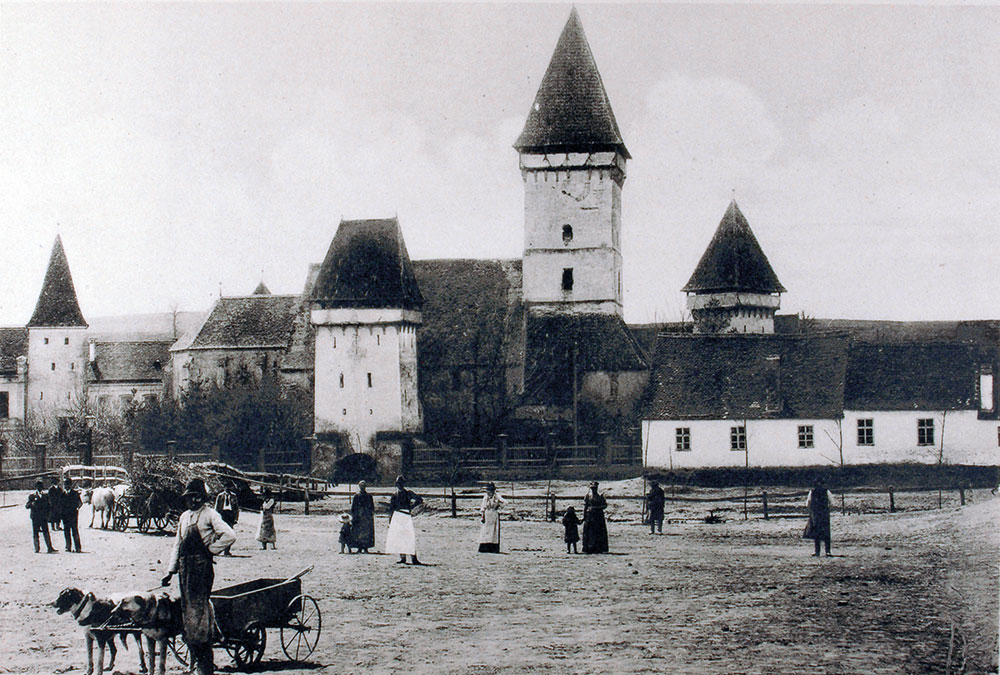
The fortification and the surrounding ring wall of the Gothic church of Agnita, built after 1500, were eliminated in the 19th century. The defence towers as a visible sign of the former defensive function still stand today.

